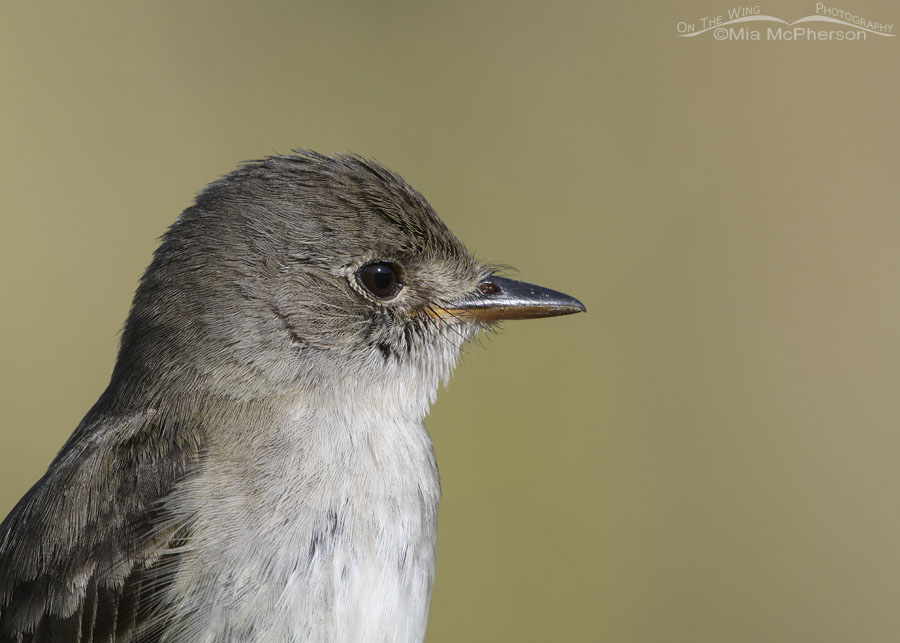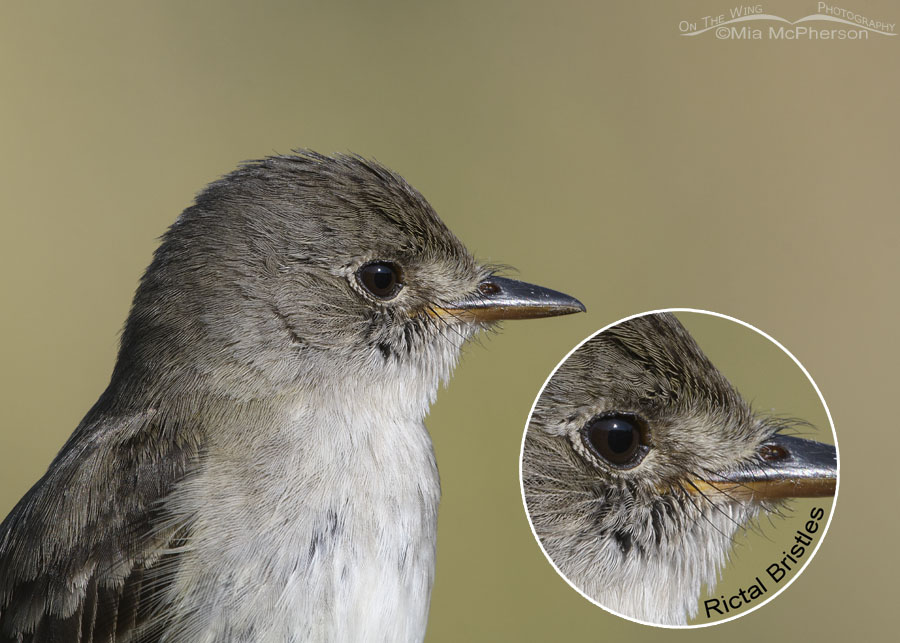 Adult Willow Flycatcher up close – Nikon D500, f11, 1/500, ISO 500, Nikkor 500mm VR with 1.4x TC, natural light
Adult Willow Flycatcher up close – Nikon D500, f11, 1/500, ISO 500, Nikkor 500mm VR with 1.4x TC, natural light
On Sunday I had a wonderful opportunity to photograph an adult Willow Flycatcher up close when it landed very near my vehicle high in the Wasatch Mountains.
The flycatcher was so close to my Jeep that I was concerned that I wouldn’t be able to focus on it due to the minimum focus distance on my 500mm lens which is about 13 feet. When the flycatcher leaned towards me for a few seconds it was too close and those photos were not sharp. When the flycatcher turned and gave me this profile view the distance was perfect.
As many of you already know I love taking portraits when my subjects move close to me. Portraits can show details that full body images might not show as clearly. In this Willow Flycatcher portrait the rictal bristles and the tiny hook at the tip of the bill of this species shows extremely well.
 Adult Willow Flycatcher up close with rictal bristle inset
Adult Willow Flycatcher up close with rictal bristle inset
What are rictal bristles?
Rictal bristles are stiff, modified feathers, with little or no vanes, found around the gape of many insectivorous birds.
In the graphic above the rictal bristles are the long feathers that look like eyelashes near the gape of the flycatcher. There are long bristles and shorter ones closer to the bill. The bristles curve towards the bill.
For many years it was believed that the rictal bristles helped to aid in the capture of insects while birds were in flight. Studies have been done where the bristles of flycatcher were removed or were taped down. Neither of those actions adversely affected the birds’ ability to capture prey, indicating that the rictal bristles do not aid in prey capture. In those studies the flycatchers that had their rictal bristles taped down or removed had more debris from their insect prey land on their eyes. That is why the newest theory is that the bristles may help prevent insects from entering the eyes on collision with the bird.
While all of that information is interesting what fascinates me is the bird in my viewfinder while I am in the field. Having a Willow Flycatcher this close to me was a real treat.
Life is good.
Mia
Click here to see more of my Willow Flycatcher photos plus facts and information about this species.


Very, very interesting images and commentary. I sure learn a lot from your posts Mia.Thanks.
Super photos & interesting info about the bristles
I always delight in your portraits. Thank you.
I love your photography
Thank you, Frank! I have great subjects.